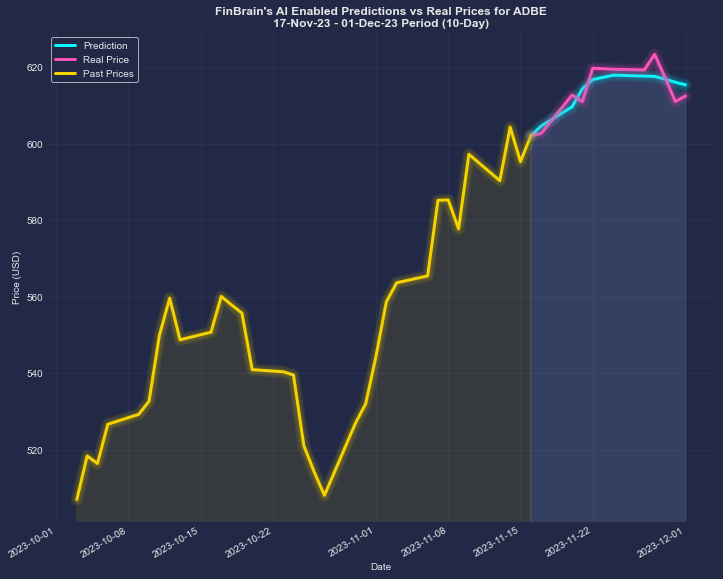20 Good Pieces Of Advice For Picking AI Stock Trading Sites
20 Good Pieces Of Advice For Picking AI Stock Trading Sites
Blog Article
Top 10 Tips For Evaluating The Strategy Customization Of Ai Stock Predicting/Analyzing Trading Platforms
AI trading platforms that can predict or analyze stocks are well-known for their ability to tailor strategies to meet the needs of the users. This lets them adapt to specific trading objectives and conditions, including the risk tolerance. Platforms with powerful customization features will increase the efficiency of your trading. Here are the top ten tips to evaluate the strategy customization capabilities of these platforms:
1. Evaluate Pre-Built Strategy Templates
The variety of templates available: Check whether the platform offers a variety of pre-built trading strategies (e.g. day trading, swing investing, long-term investments).
You can easily modify the templates and tailor them to your specific needs.
Performance history: Find out if the platform offers historical performance data on pre-built strategy.
2. Review Custom Strategy Creation
Drag-and-drop tools: Search for platforms that provide user-friendly drag and drop interfaces for customizing strategies.
Coding options: Determine whether the platform allows customized code (e.g., Python, R or any other scripting languages) for advanced users.
Flexibility - Make sure the platform you choose allows you to define rules for the entry and exit of your business, as well as parameters for risk management, as well as other key aspects of your strategy.
3. Check for Backtesting Capabilities
Historical data. Check if the platform can provide sufficient historical data to backtest your strategy.
Customizable Parameters: It is important to be able adjust parameters, including indicators and timeframes, when backtesting.
Performance metrics: Check if the platform provides precise measurement of performance (e.g. win rate, Sharpe ratio drawdown) for strategies that have been tested back.
4. Evaluate Real-Time Strategy Testing
Simulation or paper trading Check that the platform is compatible with paper trading that let you evaluate trading strategies in real-time and without risking money.
Live testing: Determine whether you are able to run strategies live in markets using tiny amounts of capital to evaluate their performance.
Real-time adjustments: Determine whether it is possible to adjust strategies according to current market conditions.
5. Evaluate the integration using technical indicators
Find out if there's an indicator library.
Custom indicators: Ensure you can import or create custom indicators to match your strategies.
Verify the indicators' combination.
6. Check for Risk Management Tools
Stop-loss/take-profit: Ensure the platform allows you to set stop-loss and take-profit levels within your strategies.
Sizing your positions. Make sure you have defined rules on how to manage your risk (e.g. an amount that is set, percent of portfolio).
Risk-reward Ratio: Verify that the platform allows setting individual risk-reward limits for trades and strategies.
7. Evaluate Multi-Asset Strategy Support
Asset Classes: Ensure that the platform is able to support strategies for a variety of asset classes (e.g. ETFs Forex, Options, Stocks).
Strategies for cross-assets: Determine if you're able to design strategies that incorporate multiple asset classes.
Market coverage: Make sure the platform you are interested in covers the markets that are of interest to you (e.g. US or international copyright, for instance).
8. Evaluate Automation and Execution
Automated trading: Ensure the platform allows automated execution of strategies based on predetermined rules.
Types of orders: Determine whether the platform can support different kinds of orders (e.g., limit, market stop, limit) to execute a strategy.
Latency - Verify the platform's ability to execute trades on time, especially when employing high-frequency strategies.
9. Review the Strategy Optimization Tools
Optimization of parameters: Ensure that the platform has tools to optimize strategy parameters (e.g. grid search, genetic algorithm).
Machine learning integration. Check whether your platform supports machine learning to optimize and refine strategies.
Analyze scenarios: Determine if the platform lets you try different strategies in different market conditions (e.g. bear bull, bear volatile).
Review User Support for Community Reviews and Feedback
Feedback from users: Use user reviews to determine the effectiveness of the platform to tailor strategies.
Forums for communities Find out if there is an active community of users who discuss and share strategies.
Support resources: Ensure that the platform offers tutorials, webinars, or documents to assist users create and optimize strategies.
Bonus Tips
Free trial period: You are able to explore the options for customization of the platform using a a demo or free trial.
Scalability: Ensure the platform can handle increasingly complicated strategies as your trading grows.
Support for customers: See if you can get help with strategy-related questions or issues.
By following these tips you can assess the capability of AI stock-predicting/analyzing trading platform to tailor strategies. This will allow you to select a trading platform that is aligned with your objectives in trading and allows you a way to implement and refine strategies. A platform that offers powerful customization options will allow you to adjust to changing market conditions and enhance your trading performance. Follow the most popular web site about stocks ai for blog examples including stock analysis websites, stock analysis websites, investment ai, incite, stock predictor, stocks ai, ai stock, ai stocks, best ai for trading, best ai trading platform and more.
Top 10 Tips To Assess The Transparency Of Ai-Based Trading Platforms For Stocks
Transparency should be considered when looking at AI platforms for prediction and trading in stocks. Transparency allows users to verify the accuracy of predictions, believe in the platform, and comprehend how it operates. Here are the top 10 methods to assess the degree of transparency on such platforms.
1. The AI Models are explained in Clear Terms
Tips: Make sure that the platform explains clearly the AI algorithms and models utilized to predict.
What's the reason? By understanding the technology, people can assess its reliability and limits.
2. Sources of Disclosure for Data
Tip: Check if the platform discloses the data sources it uses (e.g. historical stock data, social media).
Why: Knowing data sources helps ensure the platform uses accurate and comprehensive data.
3. Performance Metrics and Backtesting Results
Tips: Make sure you seek out transparent reports on performance metrics, such as accuracy rates and ROI, as well as backtesting results.
This is to allow users to evaluate historical performance with current platform.
4. Real-time updates and Notifications
TIP: Determine if the platform provides immediate updates and alerts about the predictions, trades, or system changes.
What is the reason? Real-time visibility assures that users are always aware of critical actions.
5. Transparent Communication Concerning Limitations
TIP: Find out if the platform openly discusses the risks and limitations of its predictions and trading strategies.
The reason is that acknowledging limitations can help build confidence and lets users make informed decisions.
6. Raw Data Access for Users
Tips: Make sure that users are able to access raw data, or the intermediate results AI models utilize.
What's the reason? Users can do their own analysis using the raw data as well as confirm their findings.
7. Transparency in Fees and Costs
Make sure you read the terms and conditions of any platform you are considering.
Transparency in pricing is a great thing. It prevents unanticipated costs and boosts confidence.
8. Reporting Regularly and Audits
Check to see whether there are any regular reports from the platform, or if third-party auditors verify its operation and its their performance.
The benefits of independent verification are that it increases credibility and accountability
9. Explanability of Predictions
TIP: Determine if the platform provides information on how specific recommendations or predictions are created (e.g., feature importance and decision trees).
Why Explainability allows users to be able to comprehend AI decisions.
10. User Feedback Channels and Support
Tip. Find out if there are any channels that can be used for user feedback, support, and transparency in responding to user concerns.
Why: Responsive Communication demonstrates an interest in transparency and customer satisfaction.
Bonus Tip Regulatory Compliance
Make sure the platform adheres to and is open regarding its conformity to financial regulations. This adds an additional layer of confidence for the platform.
You can assess these aspects to find out if an AI forecasting and trading in stocks platform is a transparent and unbiased. Then, you can make an informed decision. This will help you to build your confidence and trust in the platform's capabilities. See the top my review here on chart ai trading for blog info including best ai stocks, ai stock trading bot free, chart ai trading, ai coin price prediction, incite ai, best free copyright trading bot, trading with ai, ai trading bot, ai for stock trading, investing in ai stocks and more.